How to Stretch Watercolour Paper
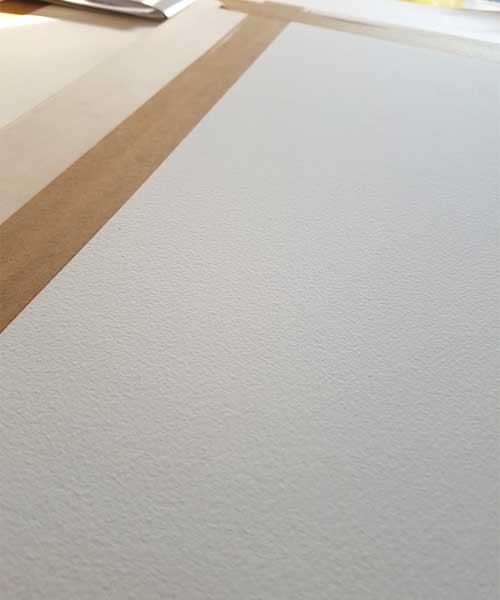
Stretching Watercolour Paper prior to painting provides a taut surface that will stop it from ‘cockling’ – or buckling – when the paint is applied. Stretching is a simple process that ensures the perfect painting surface for watercolour and gouache and involves soaking the paper, taping it down whilst wet and, as it dries, shrinking it only to the extent that the tape will allow so that it has no movement at all when further layers of water are applied.
Things to note...
Very heavy papers will not necessarily need to be stretched as they will be able to take a lot more water soaking into it before it moves.
Taping papers to a board with masking tape will hold the paper in place but does not eliminate cockling and the masking tape will peel up if it becomes over wet so is not ideal.
Small Watercolour Sketches in watercolour paper sketchbooks can't be stretched so the slight bending of the paper is to be expected.
If you do not want to stretch your paper, you may wish to consider using a Watercolour Paper 'Block' which comes with the sheets gummed on all four edges to keep the paper in place. Use the top sheet still attached to the Block and remove once the painting is complete to reveal the next sheet.
Items required for stretching paper
A shallow tray large enough to submerge the paper without creasing the paper. Garden Centres offer great options for these. Alternatively, a couple of inches of water in a bath tub is perfect!
A clean, smooth flat wooden board
Gum Strip
A soft synthetic sponge
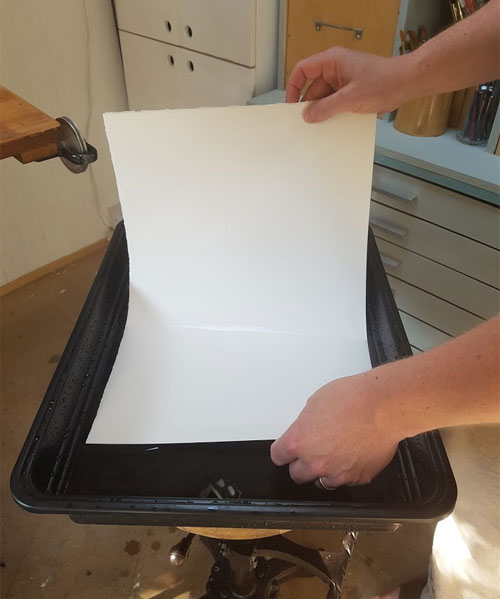
Immerse the paper in water. Lift out and shake off excess. You do not need to soak the paper for hours - just a dunk is sufficient.
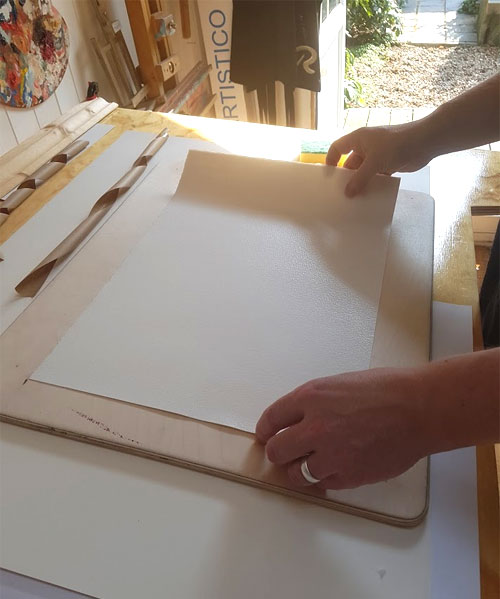
Lay the paper on a flat board and ensure that the paper is uniformly damp. Your board should ideally be wood. MDF boards are not suitable for stretching paper on a regular basis as the nature of the material means it will soak up water and will start to disintegrate or bend over time. This can be overcome by sealing or painting the MDF but is a bit of an unnecessary process if you can simply get a wooden board.
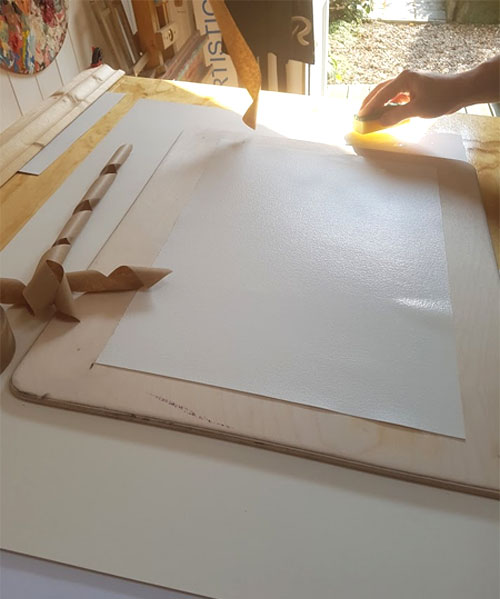
Cut strips of gummed tape to length and wet back with a damp sponge. Again, ensure that it is uniformly wet.

Lay a strip over all four edges of the paper. The strips should overlap each other at the ends and, along their entire length, be half on the paper and half on the board.

The paper will still be cockled at this point but don't worry...
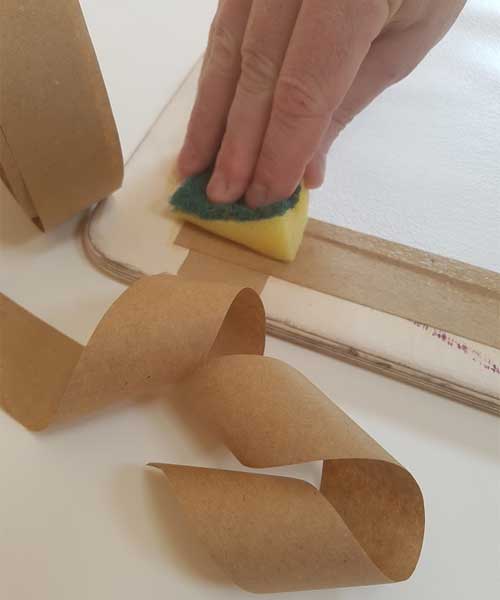
The Knack to a successful 'stretch' is to ensure that the paper and the gummed tape are of a similar wetness and, so, will dry at the same rate. If the paper is too wet, blot it with a clean sponge and if the tape is too dry, simply run a damp sponge over it.

All that's left to do is to leave to dry. A hairdryer can be used to speed drying but ensure that it is used uniformly over the whole board.
